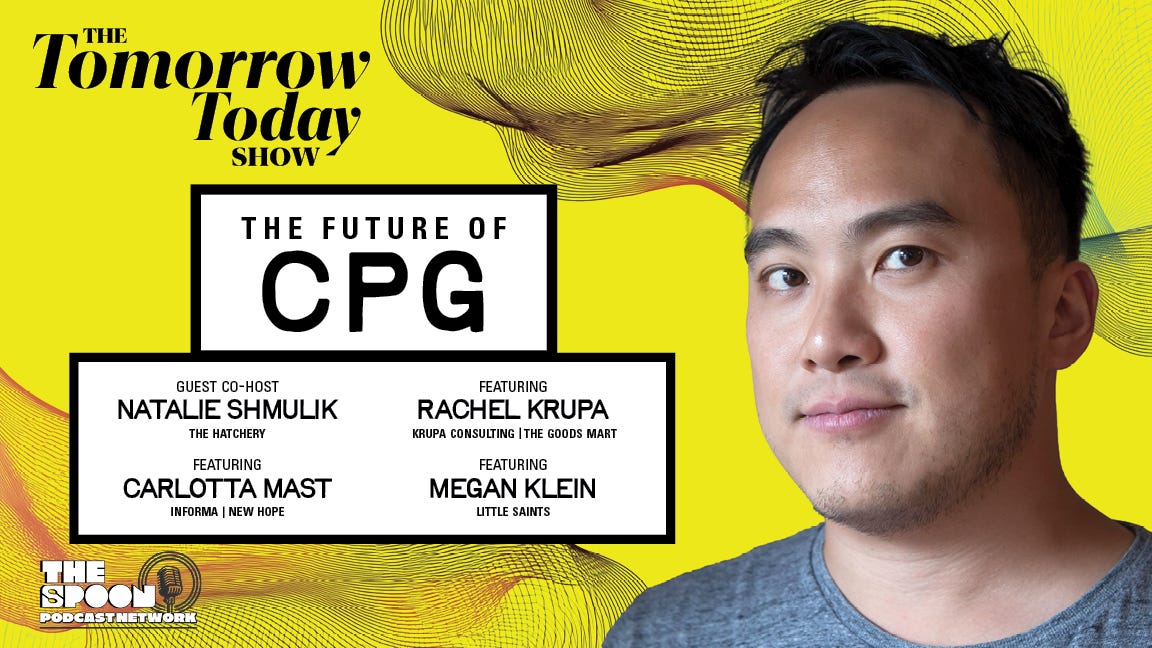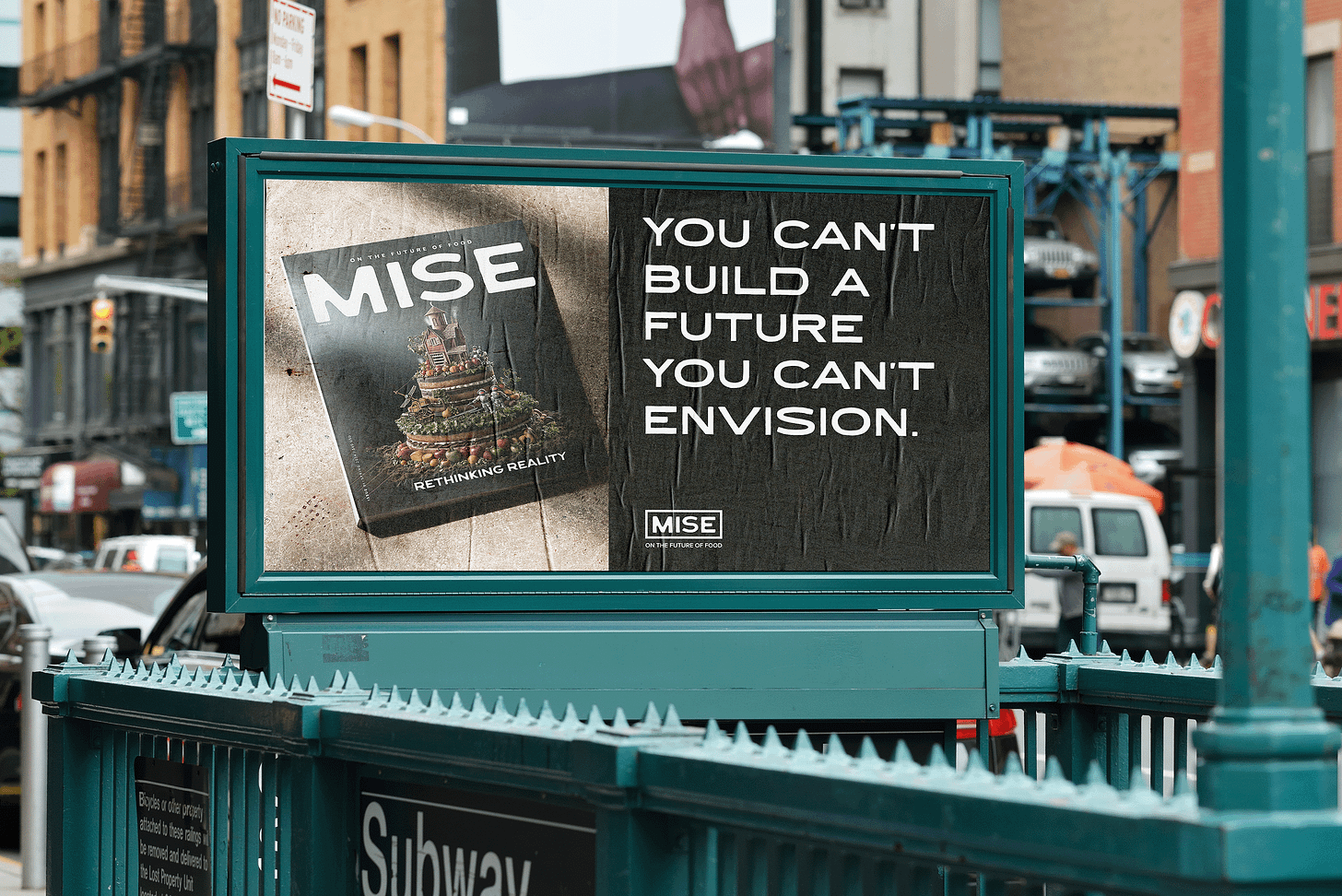Most conversations about the future of CPG revolve around surface level trend-spotting. Mushroom coffee is in. Probiotics are on trend. Protein is hot. Snacking is still on the rise. These kinds of observations, while valid, tend to miss the deeper currents shaping the industry.
On the latest episode of The Tomorrow Today Show, my guest co-host, Natalie Shmulik from The Hatchery, and I spoke to Carlotta Mast from New Hope / Informa, Rachel Krupa from Krupa Consulting / The Goods Mart, and Megan Klein of Little Saints. Each offered unique CPG perspectives from their roles in food startup incubation, producing Expo West (the Superbowl of CPG trade shows), food PR & retail, and founding and running a brand.
Their insights revealed something more profound than ingredient forecasts–a fundamental rewriting of how brands and consumers connect.
The mass market approach to food and beverage CPG dominated the 20th century. Big brands would release iconic products and reach massive economies of scale by marketing them to virtually every human on the planet. While that strategy still exists, the hallmark of 21st century CPG is the fragmentation of the market into smaller, food-tribe focused products. This isn’t just a more granular market segmentation, it’s a complete dissolution of consensus that enabled big food to thrive by being everything to everyone.
Modern people find community through consumption. An Erewhon smoothie, a Pabst Blue Ribbon tallboy, and a Blue Bottle cortado are all much more than the contents of their containers—they’re membership cards for food tribes. This is a unique phenomenon that the digital age enables, where geography no longer stands in the way of people connecting with like-minded souls. As a result, CPG consumers value authenticity over scale and brands are rewarded for genuinely embodying their values instead of merely marketing them.
This tribal fragmentation produces a fascinating paradox: consumers increasingly demand small, authentic, novel brands while the paths to scaling precisely these types of ventures become progressively more challenging. Co-manufacturing continues to be fraught with risk, headache, and expense. Modern marketing forces brands to not just make products, but to become “authentic” content creation factories. Retail distribution remains stubbornly analog in a digital world. And self-proclaimed sustainable CPG brands still rely on plastic packaging, long supply chains, and agricultural monocultures.
"They are the gatekeepers...if I was at the mercy of any other service provider that was performing poorly for me, I could choose a new one. But unfortunately, in food and beverage, you can't."
-Megan Klein, Little Saints Founder and CEO, on CPG distribution.
The funding landscape reflects similar contradictions. While more founders than ever can launch with modest capital, the "patient capital" needed for sustainable growth remains scarce. The result is a funding ecosystem with a bias toward rapid scaling, often prematurely, which has burnt both investors and founders.
The conversations on the podcast also revealed a vibe shift in the very nature of CPG entrepreneurship. The “hustle porn” narrative that dominated the 2010s and drove founders to work non-stop, aggressively growing their businesses at the expense of their physical and mental health is potentially giving way to something more humane. Instead, today's founders are celebrating self-care and rejecting burnout as a badge of honor. An ironic realization in an industry that produces food and drink to nourish, comfort, and energize its customers.
In the future, the winners in CPG will likely be brands that navigate these contradictions skillfully–building authentic fanbases while solving physical distribution challenges, securing appropriate funding without sacrificing values, and maintaining founder wellbeing throughout the journey. It can be done. But founders can still easily choose paths that attract quick, impatient capital, reinforce degenerative agriculture, generate unsustainable packaging waste, and sell products with questionable health effects–all traps that many founders will continue to fall into without vigilance and discipline.
The real future of CPG is not about predicting what next year’s flavor trends will be. It’s about addressing structural challenges in the industry that create financially, physically, and environmentally unsustainable incentives for founders, their companies, and ultimately, consumers.







